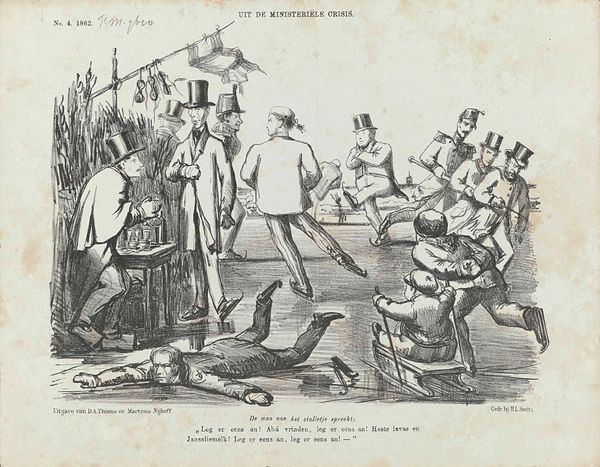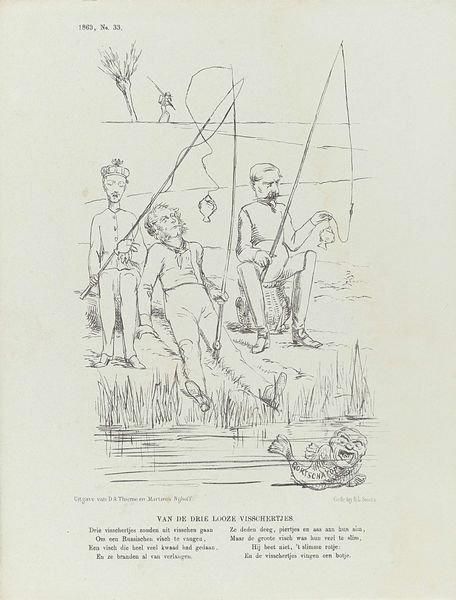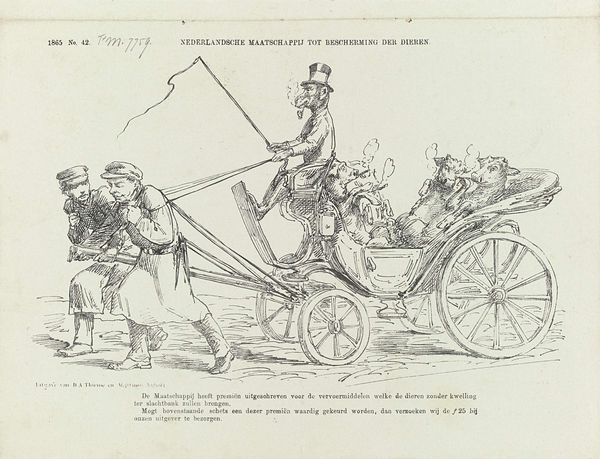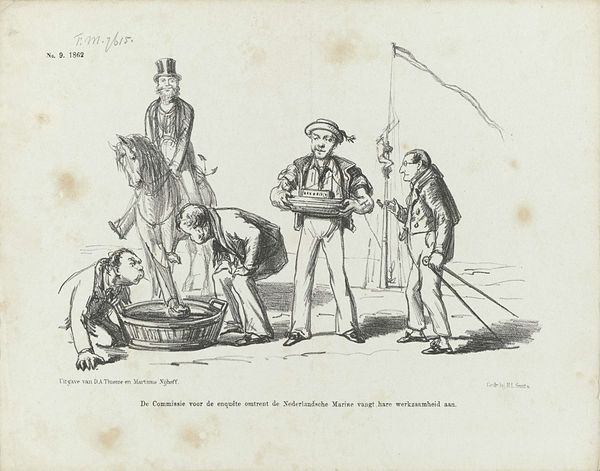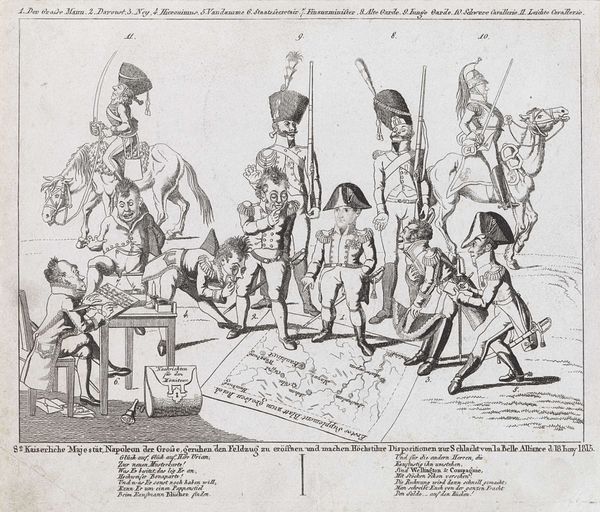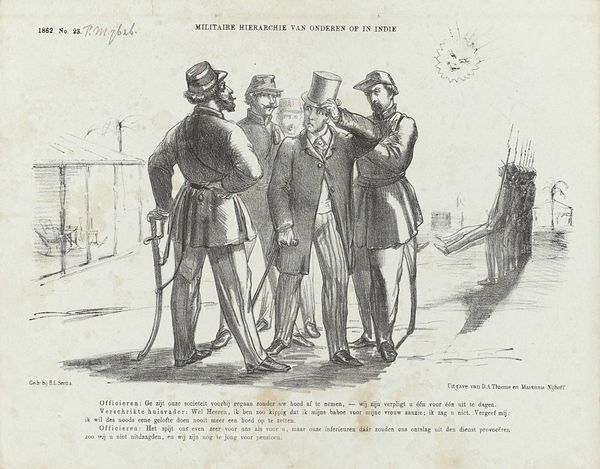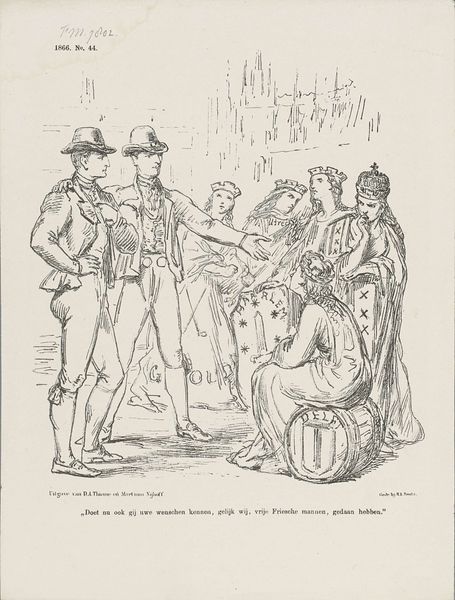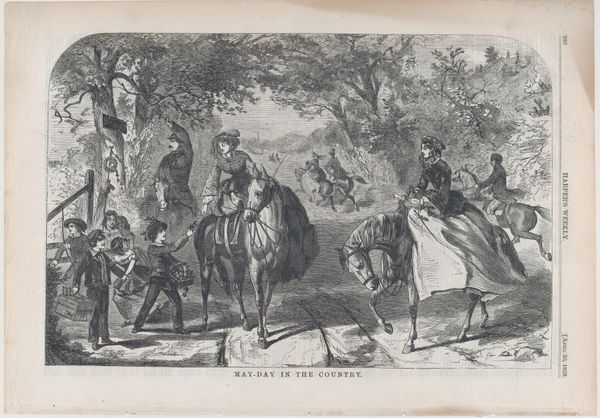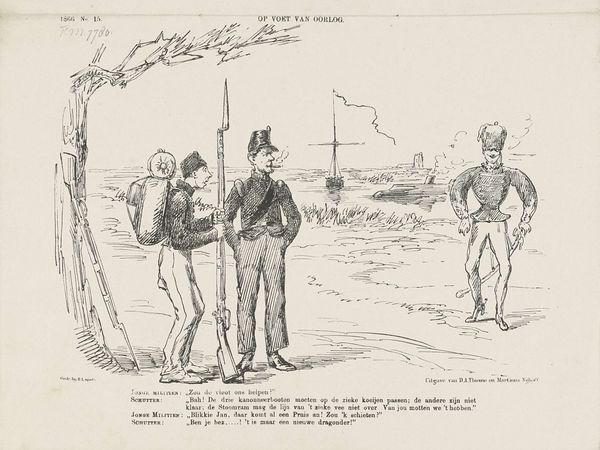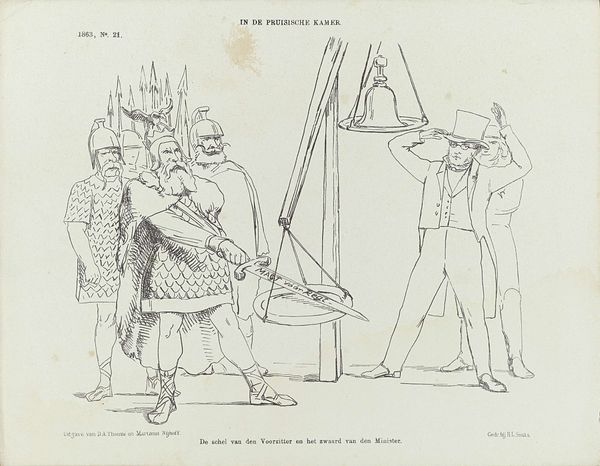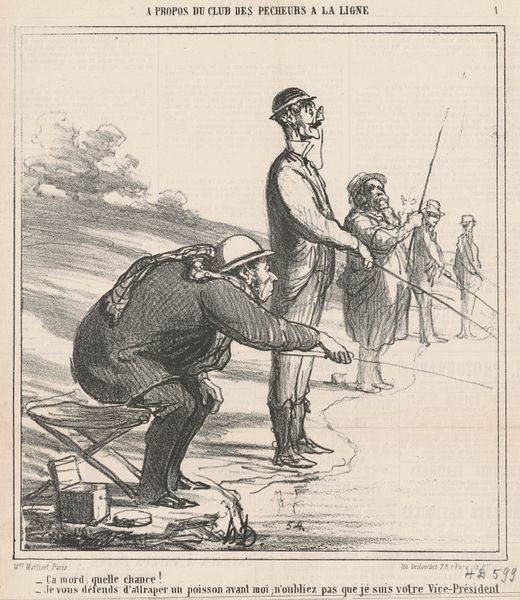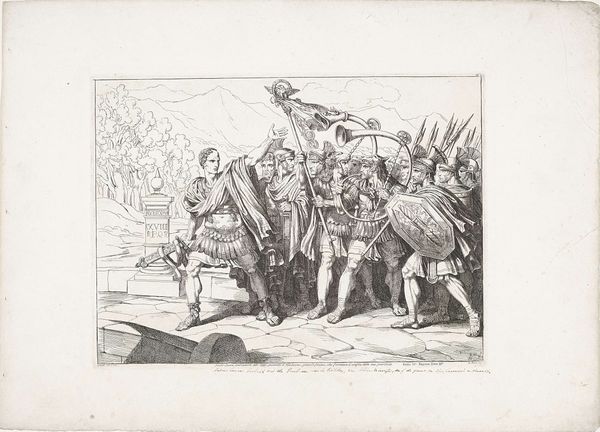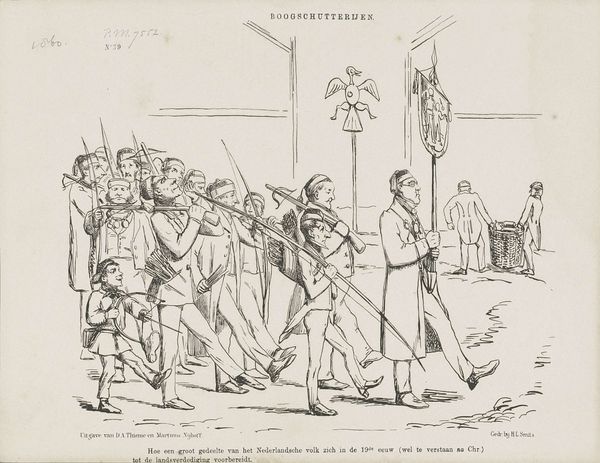
print, graphite, engraving
# print
#
caricature
#
graphite
#
history-painting
#
engraving
Dimensions: height 215 mm, width 275 mm
Copyright: Rijks Museum: Open Domain
Curator: This caricature, a graphite and engraving print titled "Spotprent op de Duitse keizer Wilhelm I," which translates to "Caricature of the German Emperor Wilhelm I", dates back to 1862 and was created by Johan Michaël Schmidt Crans. Its original publisher is credited as B.A. Thomsen and Martnus Nijhoff. Editor: It's startling how stark and almost brutal the lines are. Even without knowing the context, I get a feeling of oppression and enforced servitude just from the artist’s choice of such hard edges. Curator: Indeed. The symbolism here is heavy. The print shows Wilhelm I being carried aloft on the backs of bowed figures, while soldiers with fixed bayonets stand guard. A banner proclaims "Kaiser" or Emperor while bearing the scrawled text "constitution". What is the symbolism speaking to? Editor: It suggests a commentary on power, absolutely. It challenges the idea that power comes from the people. We know Wilhelm I had significant conflicts with the Prussian Parliament in the early 1860s regarding military reforms. The cartoon is critiquing Wilhelm I's view that his legitimacy stems from the military might— "de Genade… des legers" – which means "by the grace of… the army" as written in the caption. This would resonate strongly with anyone feeling disenfranchised. The inclusion of the army also alludes to the strength with which Wilhelm sought to achieve the "Unification of Germany". Curator: Observe, too, the physical weight conveyed through the figures. Those who support Wilhelm—presumably the nobility and military—are rendered with a kind of bloated physicality. Conversely, the bowed figures are caricatured as contorted under an invisible, heavy, inescapable reality of enforced submission, evoking religious scenes such as “Christ carrying the cross” in the manner in which those underlings must provide comfort to those above. Editor: It's interesting to see how art becomes a mirror reflecting social anxieties. That sense of unease or instability is clearly on display through Johan Michael Schmidt Crans' sharp satire here, reminding us that caricatures often reveal more truth than official portraits. Curator: Exactly. Caricatures operate as a powerful means for processing difficult, sensitive historical moments. Thank you for illuminating the historical forces at play with this image. Editor: And thank you for unveiling the artistic symbols used by Schmidt Crans to reflect that particularly volatile period in Germany.
Comments
No comments
Be the first to comment and join the conversation on the ultimate creative platform.
